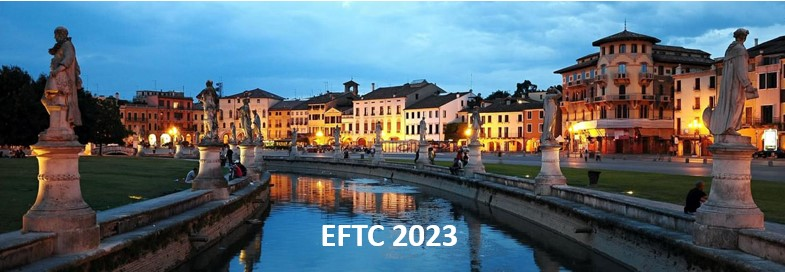Speaker
Description
Ion cyclotron resonance heating (ICRH) is known to create a population of fast ions in fusion plasmas. The non-Maxwellian distribution functions are obtained by solving the Fokker-Planck equation and are needed to describe the radio-frequency wave power deposition and transport phenomena.
This work uses wave fields and power deposition predicted by FEMIC [1], a finite element model for ICRH. When coupling a Fokker-Planck solver with FEMIC, it is beneficial to have a rapid modelling of distribution functions. Therefore, we propose a one-dimensional steady state model, which makes it possible to solve the Fokker-Planck equation by direct integration as done by Stix [2]. The benefits of this model are simplicity, transparency, and rapidity. The latter is especially important for self-consistent solvers.
In this work, a pitch angle averaged quasilinear operator for ions interacting with waves in the ion cyclotron frequency range is derived and tested. The operator is based on the work of Eriksson and Helander [3], although the finite drift orbit width is neglected, and the pitch angle dependence is averaged over. Consequently, the operator derived in this work depends only on the energy coordinate. The main advantage, compared to e.g. the operators in the PION [4] and FoPla [5] codes, is that it includes effects of the Doppler shift, such that ions at different energies are accelerated by different averaged electric fields. This is of particularly importance when the ion-ion hybrid layer is prominent, as in for example three-ion heating schemes.
This work has been carried out within the framework of the EUROfusion Consortium, funded by the European Union via the Euratom Research and Training Programme (Grant Agreement No 101052200 — EUROfusion). Views and opinions expressed are however those of the author(s) only and do not necessarily reflect those of the European Union or the European Commission. Neither the European Union nor the European Commission can be held responsible for them.
References:
[1] P. Vallejos, et al., Nuclear Fusion 59, 076022 (2019)
[2] T. H. Stix, Waves in Plasmas (New York: American Institute of Physics, 1992)
[3] L.-G. Eriksson and P. Helander, Physics of plasmas 1, 308–314 (1994) [4] L.-G. Eriksson et al., Nuclear Fusion 33, 1037 (1993) [5] D. Van Eester et al., Journal of Plasma Physics 87, 855870202 (2021)

